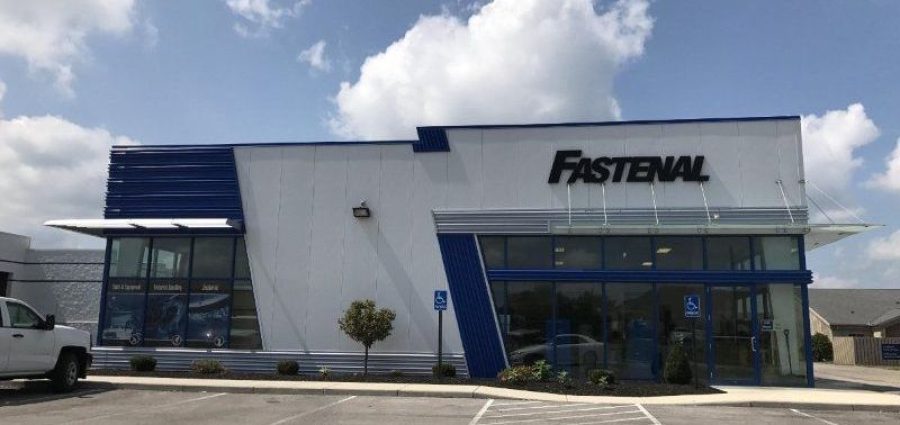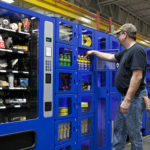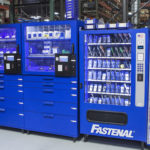On January’s earnings call with analysts, Fastenal Co. executives shared the usual facts and figures from the Winona, Minnesota-based distributor’s impressive fourth quarter.
CEO Dan Florness and CFO Holden Lewis ticked off such metrics as revenue and profit growth, earnings per share increase, operating margin improvement and other key stats from both 4Q and 2020. They recounted the positive contributions from the ongoing pandemic-driven product mix (safety was again key to top-line performance), which helped drive record net income and operating cash flow while also providing Fastenal enough capital to acquire Apex Industrial Technologies in March.
But it was one notable decline they discussed on the call that showed how Fastenal continues to adapt to a changing economic landscape — the company’s shrinking branch footprint.
Fastenal ended 2020 with just 2,003 branch locations, down 111 — or 5.3% — from the same time a year ago. Meanwhile, its in-market location employee count declined 9.3% to 12,680 from 13,977 also year-over-year.
These diminishing numbers are the result of the company’s “evolved” branch model, Florness told analysts on the call. And while he said the company would expand on this new outlook in the months to come, he shed light on the “two distinct Fastenal branch models that have emerged in 2020.”
One is the customer service branch (CSB). Said Florness: “That’s the traditional branches that many of you are familiar with where there is a showroom in front, there is a walk-in element to our business. Still, most of it’s going out the back door, but it’s more traditional. It’s about half of our branch network today.”
But last year — “Actually we’ve been testing this within a handful of regions for the last two, three years,” Florness said — Fastenal began developing a new concept called the customer fulfillment center (CFC).
Said Florness: “Think of it as a branch where we closed the front door and … we’re able to operate more efficiently. It allows everybody to go out the back door and most of our revenues go out the back door. And that is about half our branch network right now. And those are the things that are driving improvements to things like e-commerce.”
A Boon for Fastenal’s E-Commerce
Fastenal leveraged the lower occupancy in branches (as well as vending costs) “as we rationalized our branch pickup fleet and lower insurance costs,” said Lewis. That helped drive a nearly 10% EPS growth to 34 cents, up from 31 cents in the fourth quarter of 2019. The company also saw inventories dip 2.1% in the period, another benefit from the smaller branch footprint.
“We have taken steps to make it easier to move inventory internally to get it where it can best be used, which has been particularly useful as we have closed branches and migrated other branches to a leaner inventory model,” Lewis said. “We put energy into clearing older stock from our branches and hubs. As a result, branch inventory was down nearly 8% at year-end, while onsite and hub inventory was up just low-single-digits.”
But it’s Fastenal’s e-commerce growth that truly stands to gain from this new model. In fact, it already has.
The company saw 38% e-commerce growth in the fourth quarter, an upward trajectory that began in March at the onset of the pandemic when Fastenal broke the threshold of 10% of sales coming from its digital channel — this despite most pandemic products coming from “outside of e-commerce,” Florness said.
“For the first time in our history, e-commerce is more than 10% of our revenue,” he said. “But that’s e-commerce measured the way this community [investment and analyst community] measures it.”
In other words, Florness clarified, he includes such sales as vending, bins and FAST Stock as e-commerce.
Regardless of the exact number, Fastenal’s new model bodes well as the pandemic persists and customers continue to find new ways to shop — primarily anything that doesn’t include driving to a physical branch.
The company, which beat analysts’ earnings and revenue expectations, also has a bullish outlook for the year, Baird’s Dave Manthey wrote in his note to clients. “Strong 4Q20 results beat our estimates on sales/gross margin/SG&A, and the informal 2021 outlook contained no surprises,” he said. “The company unveiled an enhanced bin stocking initiative, which we believe can widen the competitive moat and drive further expansion in FAST’s industry-leading returns.”
Shares of Fastenal (Nasdaq: FAST) were down 3% at market close Wednesday.
Related Posts
-
Kaman Corp. adds chief operating officer and chief marketing officer to executive team.
-
Industrial distributor Fastenal saw its sales mix continue to return to normal in August, and…
-
Despite just 2.5% sales growth in the third quarter, Fastenal is poised to take market…






